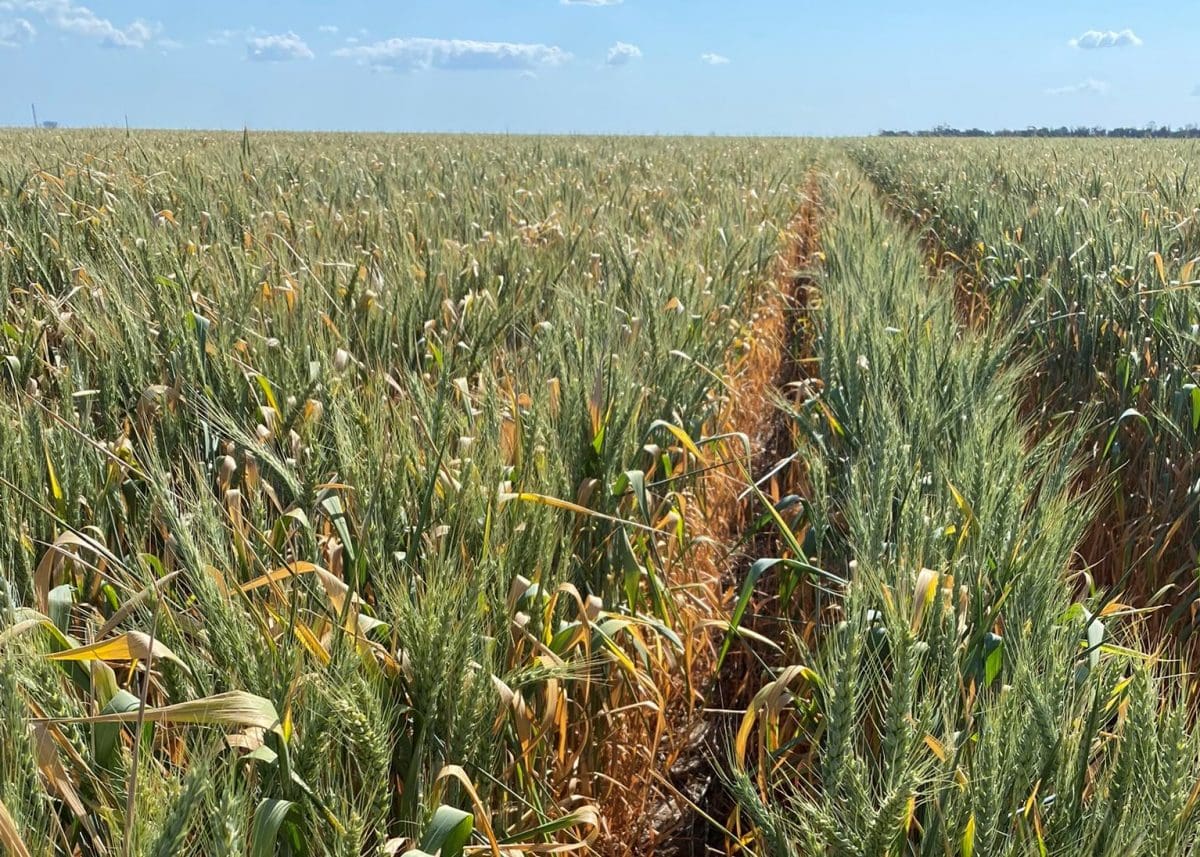
Wheat crops in southern Queensland are starting to turn. Photo: Angus Dalgliesh
SELLING pressure from growers has weighed on cash prices in the northern market this week, but the southern wheat and barley markets have traded sideways to reflect grower and trade reluctance to extend coverage because of weather risk.
While much of Australia’s wheat and barley crop is expecting average or better yields, patches of concern around dry conditions and/or frost are keeping a lid on expectations.
New-crop canola and old-crop wheat dominate the December and January shipping stem, and trade sources say the unknown quality profile of new-crop wheat is limiting interest in volume sales beyond that.
This is largely because growers and traders do not want to sell high-protein wheat into a short world market at multigrade prices.
Domestic consumers are seen as comfortable with their coverage which extends into January, with barley continuing to buy all the demand it can because of its sizeable discount to wheat.
| Nearby | New-crop | |
| Barley Downs | $284 down $4 | $288 down $7 |
| Wheat Downs | $332 down $10 | $335 down $2 |
| Sorghum Downs | $305 steady | $285 steady |
| Barley Melbourne | $280 up $2 | $290 up $5 |
| Wheat Melbourne | $350 down $5 | $340 steady |
Table 1: Indicative delivered prices in Australian dollars per tonne.
Harvest pressure hits north
Harvest of barley crops on the Western Downs of southern Queensland has started in the past week, and grower interest in selling it and wheat has picked up now that crops are on the home straight.
“We’re seeing inquiry from growers selling off the header for October,” one trader said.
“That’s putting pressure on the market,” the trader said.
Feedlots are believed to be fully covered for October, and have bought more than half their requirements for November, December and January.
Exporters are concentrating on moving the last of the current-crop out of western depots, and to the ports of Brisbane and Newcastle.
Carry-out wheat has a high-protein profile which is in strong demand as customers in Asia and beyond look to fill milling demand in the face of the drought-reduced Canadian and northern US crop.
The trade is also accumulating new-crop wheat in Queensland to maintain the shipping momentum once the last of the 2020-harvested grain loads.
New South Wales is a different story.
Agracom export manager Brett Donoghue said neither the northern NSW grower nor the trade was that interested in selling multigrade based on uncertainty about quality and yield.
“Crops are still looking great but we need a finishing rain.”
Mr Donoghue said 25 millimetres from the next change would be ideal to top up profiles ahead of the warmer weather.
“At this time of year, it’s always a question of what the quality is going to be.”
Plenty of wheat is still sitting in bunkers at western depots in NSW, but Mr Donoghue said it was likely to be earmarked for export.
“There’s wheat there, and it’s sold but it hasn’t moved yet.”
This is evidenced by the inverse in the NSW market, which demonstrates limited offerings ahead of harvest.
“The market’s not behaving as if there’s a huge carryover.
“The trade isn’t tossing it out into the domestic market; there’s a solid inverse in NSW on every delivered market.
“Because of the inverse, the consumers are going to be sweating on the first tonnes.”
Mr Donoghue said most domestic consumers appeared to be covered out to November, when NSW new crop is expected to hit the market.
Quiet in south
Emerald Grain trading manager Brant Laidlaw said some dry patches in crop were of immediate concern, and growers and the market were aware of the risk to production of spring frost.
“We’re going through a quiet patch, and trading sideways to a touch softer, following the offshore markets,” Mr Laidlaw said.
Exporters are looking at positions for March forward given that port shipping stems are fully booked in the near term.
“Out until February is pretty full.
Mr Laidlaw said wheat and canola had muscled out other commodities on the near-term stem.
“The offshore barley consumer seems a bit slower.
“My feeling is the domestic consumer has held off.”
AC Grain principal Adam Clarke said while most of the eastern Australian crop was in good stead, pockets including the Victorian Mallee were “a bit touch and go” because of dry conditions.
He said this had limited the grower and the trade’s appetite to extend forward sales.
“The wheat market has been trading sideways, and the export market has been quiet in terms of new business getting done.
“They don’t want to add any more fixed-grade milling wheat sales until we see some harvest.”
At Young on the south-west slopes of NSW, Grain Focus principal Michael Jones said frost risk was in the back of growers’ minds in terms of forward selling cereals, and domestic consumers have largely gone to ground.
“The availability of old-crop has pretty much dried up; domestic users would struggle to find it.”
A bid of $285/t for wheat delivered Griffith has appeared in the past week as a starting point for new-crop business.
“That new-crop up-country market has started to frame up.”
